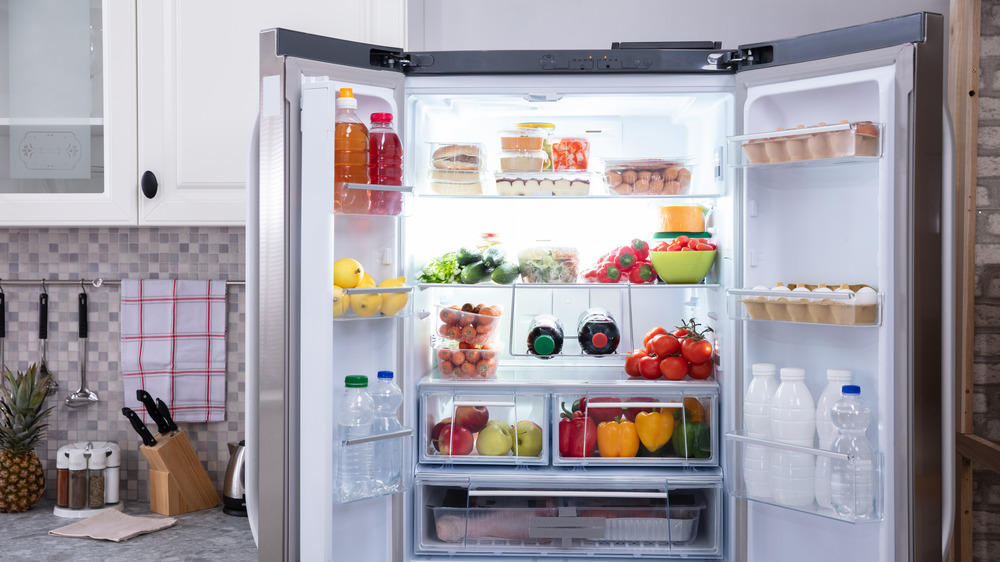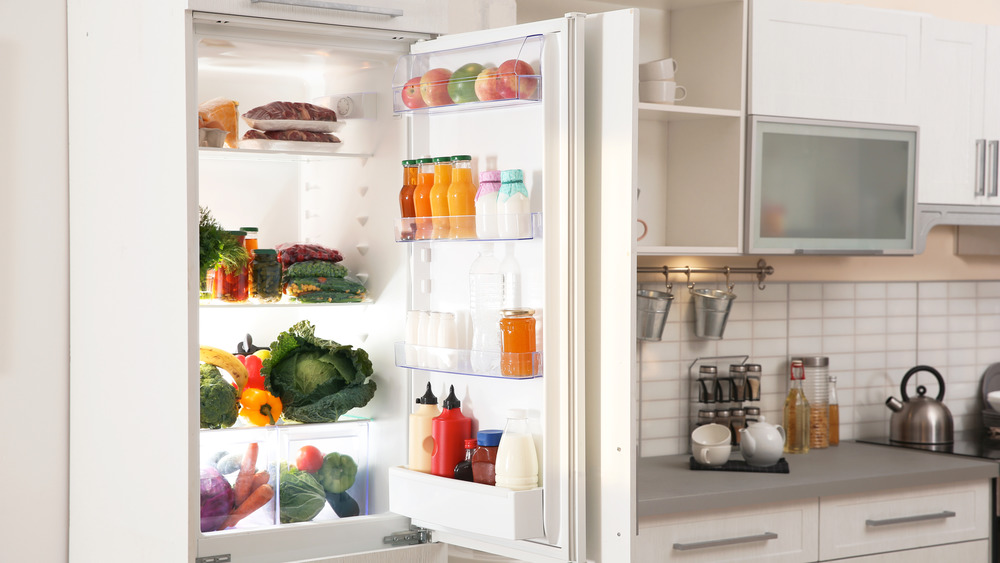Never Let Your Refrigerator Go Past This Temperature
Storing your food properly is really an art. It's difficult to know how all kinds of food should be cooled and stored to ensure they stay safe enough to eat and will keep as fresh as possible. While there are a few mistakes that often happen, there are fortunately some easy solutions to help you store your food well. One of the biggest mistakes people can unknowingly make is not setting the refrigerator temperature to the right degree.
There are factory presets, but these are not always accurate. That's why the USDA suggests you test the temperature of your refrigerator by placing a glass of water inside your fridge with a thermometer placed in it. Leave the glass of water and the thermometer for five to eight hours. It should read between 38 and 40 degrees. If not, you need to adjust the temperature of your fridge and test it again. Check the thermometer once more after another five to eight hours have passed and the temperature has been adjusted.
This is the temperature range your fridge should be maintaining
Your refrigerator should be set to at least 40 degrees Fahrenheit if not cooler, according to the FDA. If the temperature is higher than 40 degrees, then you might notice that your food might be spoiling at a faster rate that it should. Likewise, if your fridge is too cold, your perishables might be freezing solid. That's definitely not what you want either.
That's why the top of the acceptable range of temperatures is 40 degrees. However, you can and might want to set your fridge a little cooler. According to Real Simple, a good range of temperatures to shoot for is between 35 and 38 degrees Fahrenheit. This sweet spot should help keep your food fresher for longer as well as keep it from freezing.
So if you notice your food isn't keeping for as long as it should, try recalibrating your fridge and adjusting the temperature. Otherwise, you might want to reconsider where you store some items in your fridge. For example, things like eggs and milk should go toward the back of the fridge where the temperature is stable and remains cold. Places like the fridge doors are more likely to experience temperature fluxes since they are opened often and exposed to the warmer air outside your fridge.

